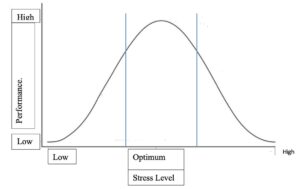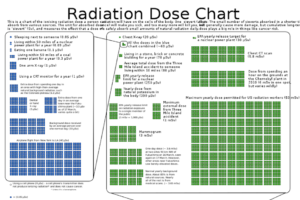This publication is in proud partnership with Project UNITY’s Catalyst Academy 2023 Summer Program.

Source: Rawpixal
On June 29th, 2023, the Supreme Court rejected affirmative action in U.S. colleges, marking the end of granting special consideration to minority students and women in college admissions1. This rejection also banned race-based consideration in medical school admissions. In the long run, this will significantly impact the diversity in the healthcare field. This article will discuss the effects of affirmative action in medical schools, healthcare providers, and the consequences for minorities.
What is Affirmative Action?
On September 24th, 1965, President Lyndon B. Johnson signed Executive Order 11246, which prohibited discrimination in employment based on color, religion, race, or national origin2. Soon after, the Office of Federal Contract Compliance Programs (OFCCP), which works under the Department of Labor, wrote an affirmative action plan establishing equal employment opportunities for minorities and women3. This order also applied to colleges and medical schools, allowing thousands of students from minority communities to be able to go to top schools and have the opportunity to become healthcare providers4.
However, on June 29th, 2023, the Supreme Court overturned this action stating that race can no longer be a basis for granting admissions5. Chief Justice John G. Roberts Jr. wrote that it violated the Equal Protection Clause, failing to show measurable reasons to justify the use of race6.
What Does This Mean for Medical Schools?
This ruling can have serious consequences. The Association of American Medical Colleges (AAMC), representing over 500 hospitals and medical schools, argued that diversity can “literally save lives”7. They added that having a diverse education can help healthcare providers care for a variety of patients from any background7. A study conducted in April of 2023 found that a 10 percent increase of Black primary doctors in a county can increase Black life expectancy by 30 days8.
Norma Poll-Hunter, the senior director of workforce at the AAMC, explained that a lack of diversity can reduce student, trainee, and physician confidence in treating patients from a different background than their own9.
An analysis of six of the nine states that have already banned affirmative action found a 17% decrease in diversity after the ban was implemented7. This could mean that there will be an overall significant decrease in healthcare providers of color practicing medicine.
What Does This Mean for Patients?
Past events such as illegal testing of blood donated for diabetes research from the Havasupai Tribe, the Tuskegee Experiment– where Black men were injected with syphilis without consent— and forced sterilizations of Puerto Rican women all have facilitated minority patients’ mistrust of doctors of different ethnicities than their own10. As a result, patients from minority communities are more likely to trust and feel more comfortable and safe expressing their concerns and issues with healthcare providers of the same race or ethnicity7.
Furthermore, the ban on affirmative action will only increase the health inequity gap between white and minority communities. A more diverse group of healthcare providers can produce better health outcomes for groups that have been historically marginalized11. Interestingly, a study done in Florida between 1992-2015 found that Black babies were twice as likely to die when cared for by a White physician compared to a Black physician9.
Currently, Black patients’ pains and conditions are under-treated in comparison to White patients12. Healthcare workers are more likely to refer to Black patients as people who just want a “fix”13. Consequently, Black patients are neglected the proper care and treatment, only making their conditions worse. Not only are they neglected care, but individuals from minority races are less likely to visit the doctor, even when they have the services to go to14. A less racially diverse healthcare system will only reduce the protection against these biases and hurt minority patients15.
Although diversity was increasing within the healthcare system before affirmative action16, current efforts to ensure that diversity keeps increasing are needed. The decrease in the diverse backgrounds of healthcare providers will not only increase the mortality rates of minority communities but will also push back the fight for racial equity and equality17. As America continues to become a more diverse country, individuals from minority communities must be granted the opportunities they deserve so that the voices of those who have been suppressed are heard and treated.
References
- Probasco, J. (2023). Supreme Court 2023 Rulings on Affirmative Action Explained. Investopedia https://www.investopedia.com/supreme-court-affirmative-action-decision-2023-7555848.
- A brief history of affirmative action. https://www.oeod.uci.edu/policies/aa_history.php.
- A Brief History of Affirmative Action. https://www.oeod.uci.edu/policies/aa_history.php#:~:text=On%20September%2024%2C%201965%20President,receiving%20federal%20contracts%20and%20subcontracts.
- Miller, M. K. (2019). 5 reasons to support affirmative action in college admissions. Center for American Progress https://www.americanprogress.org/article/5-reasons-support-affirmative-action-college-admissions/.
- Totenberg, N. (2023). Supreme Court guts affirmative action, effectively ending race-conscious admissions. NPR.
- Supreme Court guts affirmative action in college admissions. CNN. (2023).
- Andrews, M. (2023). How health care may be affected by the high court’s affirmative action ruling. KFF Health News https://kffhealthnews.org/news/article/medical-schools-admissions-race-affirmative-action-supreme-court-ruling/
- Nawaz, A. & Hastings, D. Affirmative action ruling raises concerns over impact on medical school diversity. (PBS NewsHour, 2023).
- KFF Health News. (2023). How health care may be affected by the Supreme Court’s affirmative action ruling. North Carolina Health News https://www.northcarolinahealthnews.org/2023/07/15/medical-schools-may-be-affected-by-the-supreme-court-affirmative-action-ruling/
- Solis-Moreira, J. (2023). The Supreme Court ruling to end affirmative action will make US doctors less diverse. Popular Science https://www.popsci.com/health/affirmative-action-ruling-medical-schools/.
- American Medical Association. (2023). Affirmative action ends: How Supreme Court ruling impacts medical schools & the health care workforce. American Medical Association https://www.ama-assn.org/medical-students/medical-school-life/affirmative-action-ends-how-supreme-court-ruling-impacts.
- Bio, R. F. (2020). Black Americans are Systematically Under-Treated for Pain. Why? Frank Batten School of Leadership and Public Policy | University of Virginia https://batten.virginia.edu/about/news/black-americans-are-systematically-under-treated-pain-why.
- Hostetter, M. & Klein, S. (2021). Understanding and ameliorating medical mistrust among Black Americans. Preprint at https://doi.org/10.26099/9GRT-2B21.
- Smedley, B. D., Stith, A. Y., Colburn, L., Evans, C. H. & Institute of Medicine (US). Increasing Racial and Ethnic Diversity Among Physicians: An Intervention to Address Health Disparities? (National Academies Press (US), 2001).
- Gipson, K. (2023). The end of affirmative action will lead to more preventable deaths. The Hill.
- Gender and Diversity in Healthcare Employment: Breaking Barriers and Promoting Inclusion. https://www.urbanbound.com/blog/gender-and-diversity-in-healthcare-employment-breaking-barriers-and-promoting-inclusion.
- Stanford, F. C. (2020). The Importance of Diversity and Inclusion in the Healthcare Workforce. J. Natl. Med. Assoc. 112, 247–249.
Related Posts
Retitling Stress: A Look at the Yerkes-Dodson Law
Figure 1: This graph compares stress level with performance at...
Read MoreThe Influence of Language on the Perception of the World
Figure 1: The Influence of Language on the Perception of...
Read MoreIncarceration and Motherhood: A Brief Overview of Maternal Health Issues in American Prisons
Figure 1: Guards in prisons are able to put prisoners...
Read MoreBetter Zoning Through Inter-city Cooperation
Figure: High Density Housing (Source: Geograph Britain and Ireland, Author:...
Read MoreAlleviating Vaccine Hesitancy: The Path to a Safer Future
The human mind is constantly working on the fly, adapting...
Read MoreMedical Overtreatment in the United States: Causes, Consequences, and Solutions
This article was originally submitted to the Modern MD competition...
Read MoreMedha Modekurti






